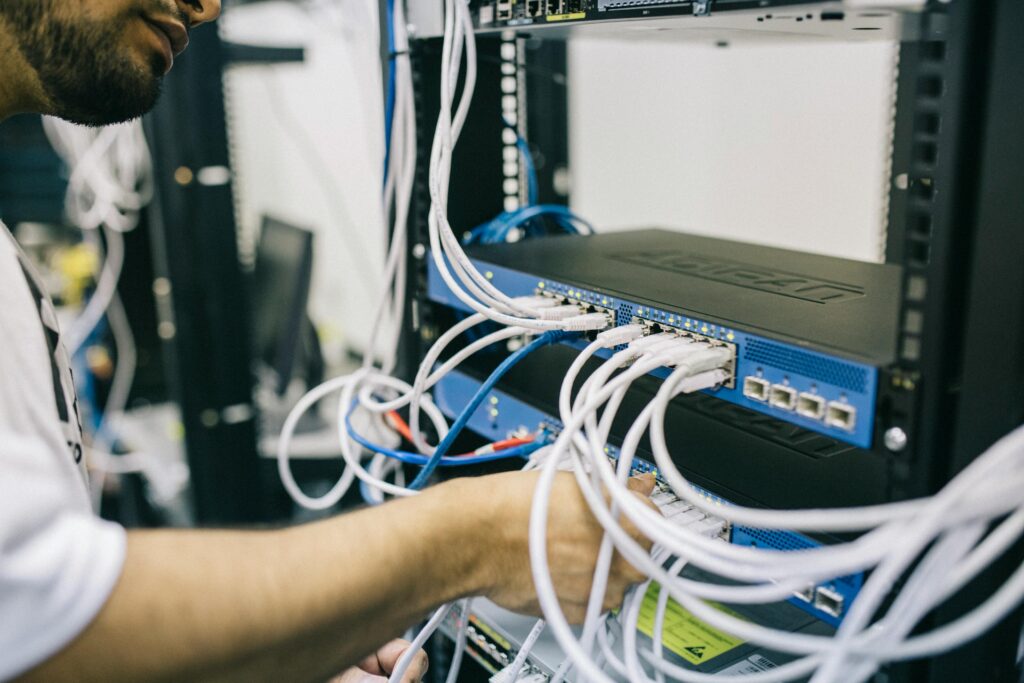End-to-end computing solutions encompassing everything from the desktop endpoints to the data center, and everything in-between dominated the IT industry for years. In the 1990s Tier 1 vendors, including IBM, Hewlett-Packard and Compaq all followed the end-to-end line, and even those mostly interested in data center solutions, like Sun Microsystems, offered targeted workstation products.
Over time, that situation changed. HP acquired Compaq and refocused its brand on low-budget PCs. IBM sold its Intel-based PC lines and then its System x server organization to Lenovo. Sun’s workstations, along with the rest of the company’s hardware business, were felled by increasingly robust x86 solutions. HP bifurcated with one business focused exclusively on the data center (HPE) and the other on PCs and printing/imaging (HP).
But some chose to stick with the end-to-end vision. Lenovo’s IBM acquisitions helped it build up a strong set of cross-enterprise solutions. Dell leveraged its own organic investments, along with robust acquisitions culminating in the purchase of EMC, into a muscular end-to-end portfolio.
A new Dell solution, the Edge Gateway 3000 Series recently introduced at Mobile World Congress (MWC) 2017 in Barcelona, finds the company doubling down on an interesting new end-to-end methodology – edge-to-core-to-cloud – inspired by the Internet of Things (IoT). Let’s consider that new solution and what it says about Dell, IoT and the evolution of end-to-end computing.
Edge Gateway 3000 – A closer look
The Edge Gateway 3000 Series complements Dell’s other IoT-enabling solutions, the Edge Gateway 5000 Series and its Embedded Box PC 3000 and 5000 Series. The Gateway 5000 is designed for fixed use cases requiring modular expansion, large sensor networks and more advanced edge analytics. In contrast, the Gateway 3000 focuses on fixed and mobile use cases where smaller sensor networks, tight spaces and simpler analytics are commonplace.
Gateway 3000 configurations are designed for specific use cases:
- Model 3001 for industrial automation and energy management
- Model 3002 for transportation and logistics
- Model 3003 for digital signage and retail
Developed by Dell’s rugged product team, the models all share similar technical attributes, including: Intel Atom processors; 2 GB RAM and 8 GB eMMC storage; Ethernet and USB ports; certification for Wi-Fi and Bluetooth LE; 3G or 4G LTE cellular options; integrated digital GPS, accelerometers, and atmospheric pressure sensors; support for power options and the ability to operate in temperature extremes from -30°C to 70°C. Gateway 3000 solutions will be available in early summer 2017 starting at $399 USD.
The Gateway 3000 models can be adapted beyond their target applications. For example, I/O capabilities can be expanded, and mounting accessories enable a range of deployment options, including factory locations and mobile use cases (under the hoods of semi-trucks and other vehicles). Optional antennas and expanded onboard storage (via SD cards) are also available.
A new beginning for end-to-end solutions
What do Dell’s new solutions say about end-to-end computing? In the 1990s, IT vendors’ solutions reflected the common belief that workers using networked PCs provided enhanced value to their organizations. IoT extends those networked computing concepts and potential benefits by orders of magnitude.
However, rather than digitally enabling individuals and work groups, IoT can increase the understanding of operational assets and use cases. Those range from commercial air conditioners to injection molding machines and other factory floor equipment to heavy-duty truck and aircraft engines to massive industrial pumps to herds of cattle and even individual cows.
Operational assets can be considered “islands of automation” in that they generate potentially valuable data. Evolutionary changes, including the rapid decline of sensor costs, software-defined infrastructure development and robust mobility and cloud technologies enable data from operational assets to be securely gathered, analyzed and integrated into business processes. That means that businesses can gain new insights into their operational processes that aid deterministic, mission critical decision-making.
Where does Dell fit into this? IoT-enabling devices like the new Gateway 3000 Series can collect massive volumes of operational data and perform preliminary analytics at the network edge. In turn, those processes are crucial for identifying and cost-effectively transferring important information to core business and cloud data centers for further analysis.
Dell’s IoT strategy doesn’t begin and end with its Edge Gateway solutions. Other company solutions complement Dell’s vision of industrial IoT, including its Pivotal cloud native application development tools, RSA threat detection/response solutions, SecureWorks security management offerings, VirtuStream cloud management software and VMware IoT asset management solutions.
Final analysis
At the at the center of Dell’s IoT strategy are edge-to-core-to-cloud processes that represent an essentially new model of end-to-end computing. However, the company also recognizes that those processes’ complexity and how they shift to accommodate specific industries and use cases requires both multilateral and unilateral efforts.
Dell understands that developing a broad portfolio of replicable IoT solutions requires partnering with companies that had deep experience in specific industries, technologies and services. Dell has done and will continue to do just that, a practice that allows the company to both engage expert partners who help leverage Dell’s solutions in their core focus areas, and to select the opportunities where its own homegrown offerings and innovations can shine.
To effectively serve their enterprise customers, vendors must be willing to step beyond their traditional comfort zones. They must go where solutions are required and aid customers on their quests for business-critical information.
Dell’s new Edge Gateway 3000 Series, and the company’s other IoT-enabling solutions clearly demonstrates its intention to support enhanced computational intelligence at the network edge, in core data centers and in the cloud – wherever Dell’s customers require and their data resides.
- Dell Concept Luna – Inspiring Sustainable Innovations with Circular Design - December 21, 2023
- AI Alliance: IBM, Meta, Dell and 50+ Founding Partners Pursue Open, Transparent and Safe AI Innovation - December 13, 2023
- Dell Technologies: Creative Partnering = GenAI Innovation - November 30, 2023




Comments are closed.